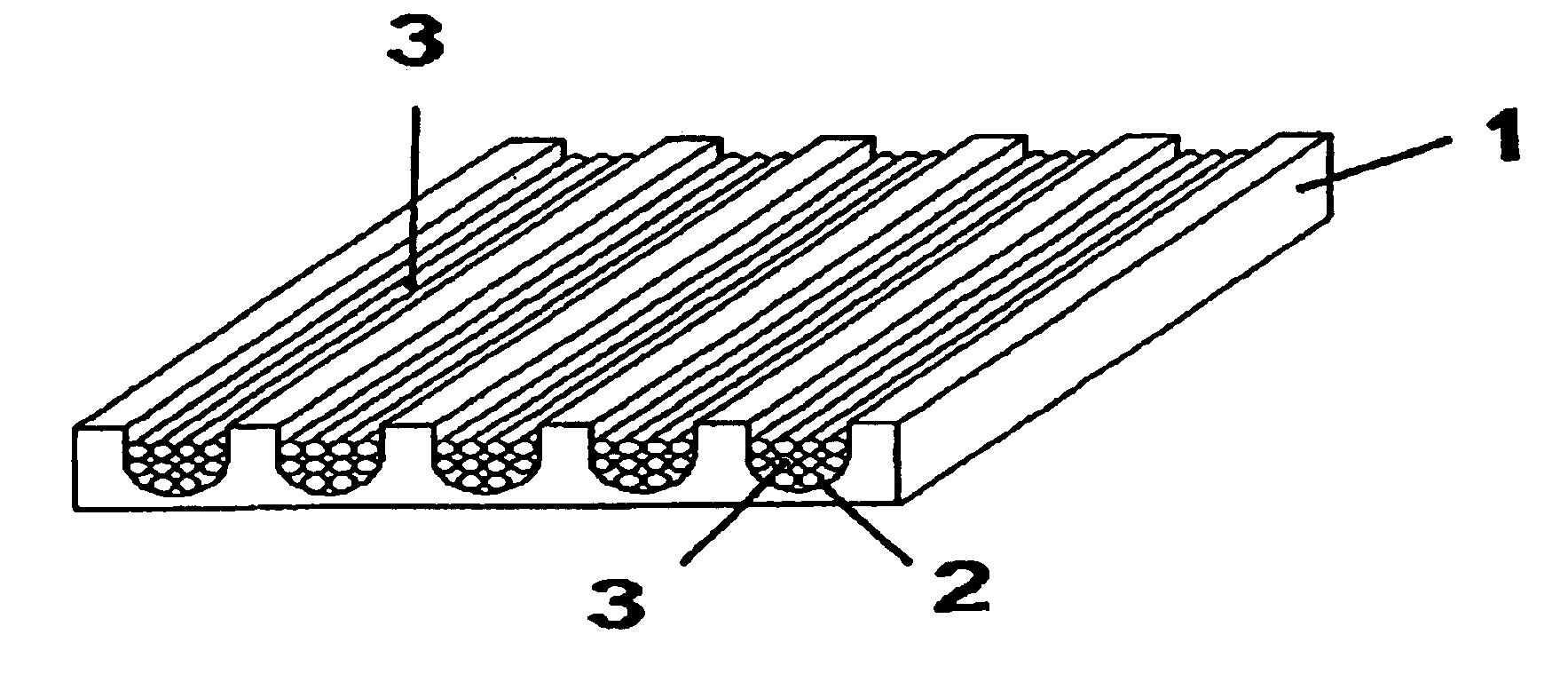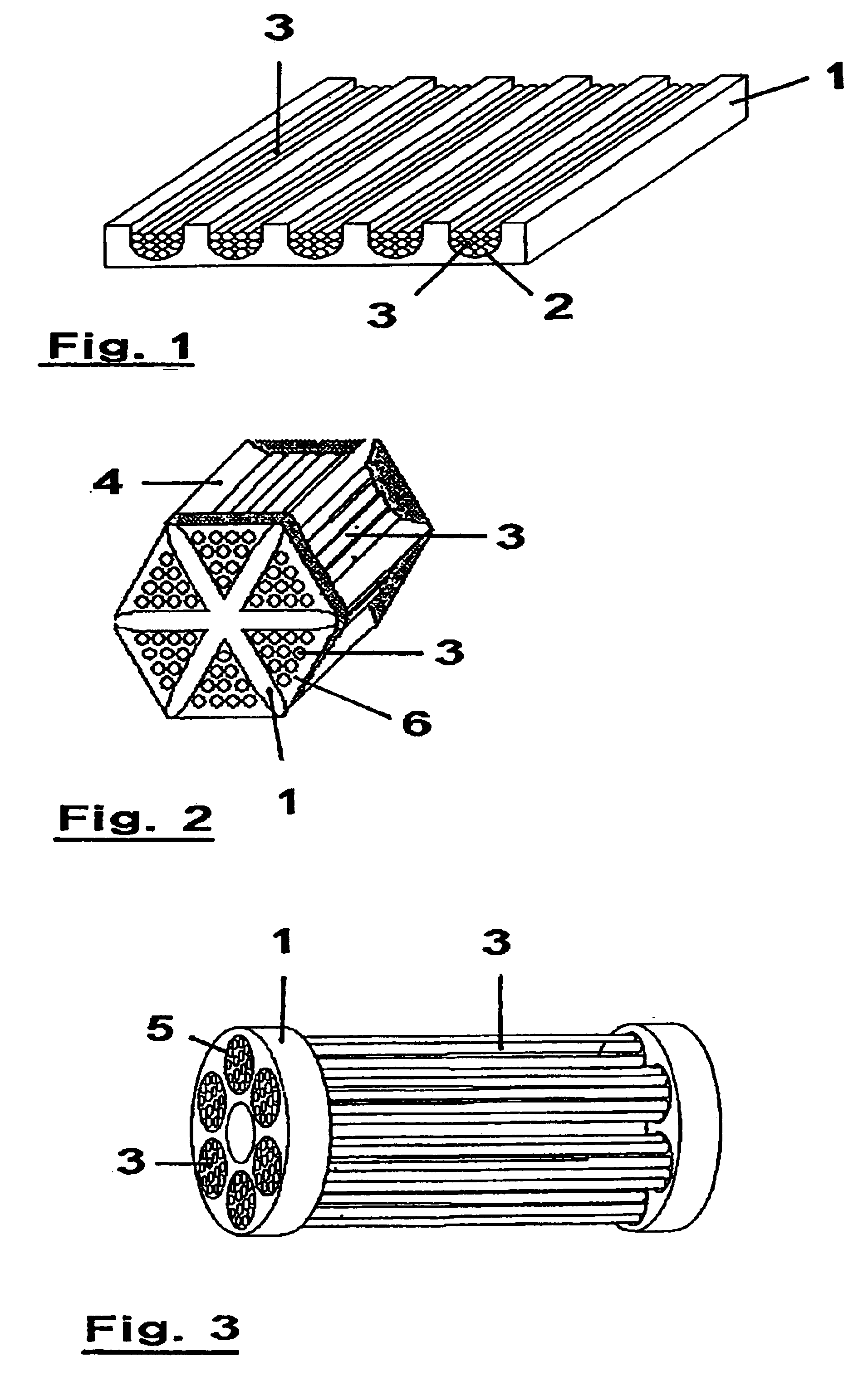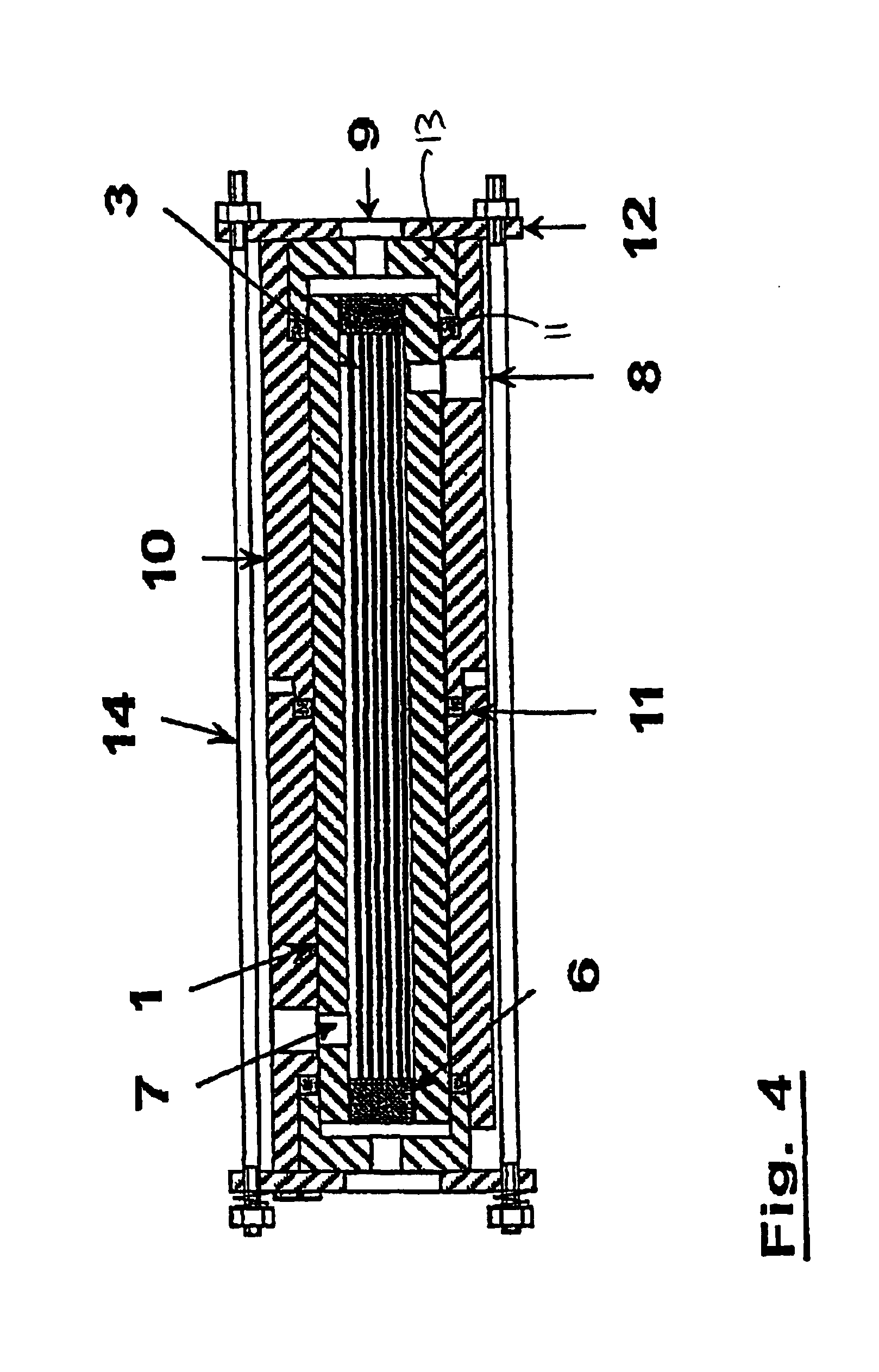Method for producing a hollow fiber membrane module or a capillary membrane module
a technology of capillary membrane and hollow fiber, which is applied in the direction of water/sludge/sewage treatment, moving filter element filters, applications, etc., can solve the problems of easy breakage of hollow fibers, difficult production of hollow fiber membrane modules according to the method of this printed publication, etc., to achieve significant simplified production of hollow fiber membrane modules or capillary membrane modules, the effect of preventing fiber breakage and other defects
- Summary
- Abstract
- Description
- Claims
- Application Information
AI Technical Summary
Benefits of technology
Problems solved by technology
Method used
Image
Examples
Embodiment Construction
[0036]FIGS. 1-3 show different examples of preferred embodiments of a mold 1, as is utilized in the present method. In the example of FIG. 1, mold 1 is executed as a grooved plate made of ceramic or metal. Hollow fibers 3 in a green state are placed, preferably in bundles, into the grooves 2 of the mold, as the figure shows. Following or simultaneously with the subsequent potting step, these fibers 3 are connected with mold 1.
[0037]The mold (1) of FIG. 2 is designed star-shaped and preferably made of a porous ceramic or porous metal. The hollow fibers 3 in a green state are placed in the recesses 4 formed by the star shape, sintered and simultaneously or subsequently potted.
[0038]FIG. 3 shows a third example, in which mold 1 is formed by two plates provided with hole openings 5. The green fibers are placed in these openings 5 and then sintered and potted. In this manner a module in the form of a multi-channel is formed, as FIG. 3 shows.
[0039]In all three examples, after the potting ...
PUM
| Property | Measurement | Unit |
|---|---|---|
| diameter | aaaaa | aaaaa |
| diameter | aaaaa | aaaaa |
| diameter | aaaaa | aaaaa |
Abstract
Description
Claims
Application Information
 Login to View More
Login to View More - R&D
- Intellectual Property
- Life Sciences
- Materials
- Tech Scout
- Unparalleled Data Quality
- Higher Quality Content
- 60% Fewer Hallucinations
Browse by: Latest US Patents, China's latest patents, Technical Efficacy Thesaurus, Application Domain, Technology Topic, Popular Technical Reports.
© 2025 PatSnap. All rights reserved.Legal|Privacy policy|Modern Slavery Act Transparency Statement|Sitemap|About US| Contact US: help@patsnap.com



